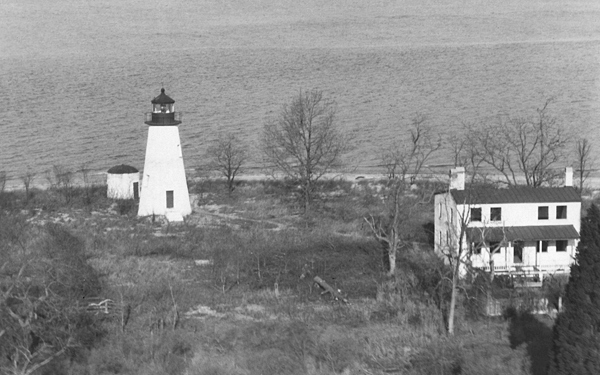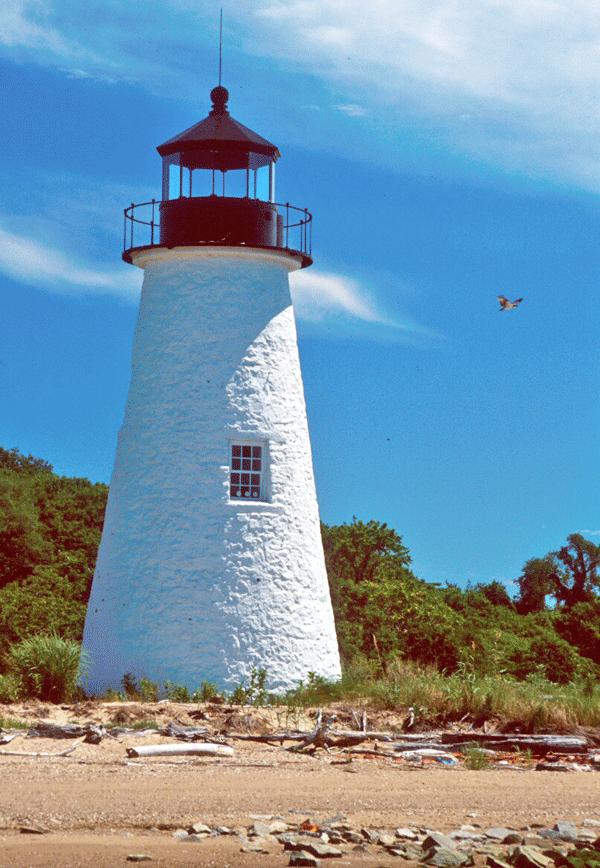Pooles Island, near the mouth of the Gunpowder River, is a small island that has been untouched by curious eyes for many years.

John Smith first discovered the island around 1612 when he circumnavigated the Bay, but prior to his arrival it was home to a tribe of Susquehannock Indians. Over the next 400 years, the island would change ownership and usage several times, and even its name underwent several revisions. John Smith originally named it Powell's Island after a member of his exploration group.
In 1771 it was purchased by John Bordley who attempted to make it into a game preserve, even importing hare and partridge from England to supplement the native animal population. A few years later, he would build a gunpowder factory and livestock farm in support of the Revolutionary War.
In 1808, the island was purchased by Peregrine Wethered who ran it as a slave plantation, growing wheat crop. The soil quality was reported to be exceptional and the harvest was very lucrative.
War broke out again during the early 1800s and the British Navy occupied the island, using it as a base to launch attacks on the Eastern and Western shores. But after the War of 1812 it was for some time forgotten, until it was again privately purchased by George Merrett. Merrett had heard claims of the island’s fertile soil and low pH of the water (ideal conditions for planting fruit trees) and so he planted thousands of peach tree saplings, creating a small orchard on the northern shore. Luckily the claims proved to be true, and for many years the trees produced the once famous “Pool’s Island Best” peaches without the aid of fertilizers. Farmers boasted that the island was a little “piece of Iowa soil in Maryland.”

It is said that Pooles Island was once the scene of an illegal prizefight in 1849. Some reports say that Maryland's governor decreed that no steamboat captain could transport spectators to the event, so many fans were transported to the island on oystermen's skipjacks.
Later in 1855, two brothers were caught in a sudden squall in which their ship capsized and sank in the frigid waters off Pooles Island. Eventually their bodies were washed ashore and the keeper of Pooles Island Light buried their remains on the island. Years later, the Army moved the remains to a resting place near the lighthouse, and the grave marker remains to this day.
In 1917, at the outset of World War I, ownership of Pooles Island was transferred to the War Department, and it was used as a testing ground for artillery and aircraft bombardment with the establishment of Aberdeen Proving Ground. It remains off limits to the general public as there are still unexploded bombs and shells on the island from its shelling practice days (1918 through the early 1960s).
Once mapped at nearly 300 acres, the island has since eroded to less than 200. And despite the destruction wrought during its military testing days, Pooles Island has benefited from the Army's stewardship. With the island off limits to civilians, it has become a thriving sanctuary for several bird species, including herons, eagles, and ospreys, and even small herds of deer call its shores home.
The island’s lighthouse, built in 1825 by John Donahoo (who would go on to build several lighthouse on the Chesapeake), was deactivated in 1939. Pooles Island Light is the oldest lighthouse still standing in Maryland and the fourth oldest in the Chesapeake Bay area. In 1997, the lighthouse was placed on the National Register of Historic Places. In 2011 the light was reactivated and now runs on solar power.
For more information, visit the Chesapeake Chapter of the U.S. Lighthouse Society.